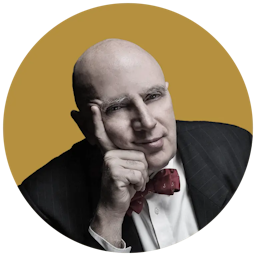The Man Behind the West Coast Alto Sound
This article is from the archive of The New York Sun before the launch of its new website in 2022. The Sun has neither altered nor updated such articles but will seek to correct any errors, mis-categorizations or other problems introduced during transfer.

At first I was annoyed that Bud Shank, the veteran alto saxophonist who opened last night at Iridium, no longer sounds exactly like he did 50 years ago, at the height of the California cool-jazz movement. But then again, just because he hasn’t played in New York for many years doesn’t mean he was in a time capsule. The truth is too few listeners give Mr. Shank credit for having a style of his own.
It used to be, when you heard Mr. Shank on the radio, you were less likely to think “that sounds like Bud Shank” than “that sounds like an archetypical West Coast alto.” Yet what we thought was the default parameter of a time and a place was actually the very personal sound of a single player.
Mr. Shank was always considerably more than “just” a California cool saxophonist. He was one of the earliest jazzmen to extensively improvise on the flute and probably the first American musician to master the bossa nova (he did it years before Stan Getz). For a long stretch in the 1970s and 1980s, he purveyed a distinct brand of jazz-pop chamber music with the LA Four.
Mr. Shank’s new album, “Bouncing with Bud and Phil” (Capri 74071), taped live at Yoshi’s last year, shows how his artistry has evolved. His tone has hardened, his attack sharpened, his timbre and intonation become more personal, and his emotional scope widened.
He shares most of the seven tracks here with a performer of equal stature, Phil Woods. In decades past I would have thought of Mr. Woods as the gruffer, more down-and-dirty New York-style bebopper. But Mr. Shank’s playing, while never merely pretty or sweet, is now just as aggressive and energetic as that of Mr. Woods – or, indeed, of anyone else playing the horn today.
Although the two altos spur each other to wondrous heights throughout the album, my favorite example of Mr. Shank’s own playing is his solo feature, “Nature Boy.” He played this Nat Cole hit on one of his first albums, 1956’s “The Bud Shank Quartet” (available on Mosaic’s much-recommended Bud Shank box).There he played the 16-bar tune on flute, with a quiet intensity and even tone. The new reading has a much more jagged edge. It starts with a stark introduction by pianist Mike Wofford, and shows an avant-gardist’s sense of beauty. He’s not afraid to slightly overstep the strict bounds of tonality or to use a shrill, harsh sound to make an emotional point.
Mr. Shank, who turns 80 next year, has recorded a half-dozen or so albums in the last decade, but with the exception of 1996’s “Bud Shank Meets the Rhythm Section” (Milestone 9273), they have been hard to acquire. To have a new disc in our hands, and the man himself in town, is truly a treat.
***
This Sunday, Channel 13 will run the pilot for “Legends of Jazz,” which I have been told is the first jazz series to run on broadcast television in 40 years.
Right now you can see more jazz on video than at any other time in history. BET JAZZ occasionally runs performances along with their mostly smooth-jazz programming. Documentaries and concerts show up on such culture-oriented cable channels as A&E, Bravo, and Ovation. And many jazz DVDs continue to be released. Still, a show on regular broadcast television is a sign of health.
I do confess a certain prejudice against the host, Ramsey Lewis. This most capable keyboardist has spent nearly all of his career making what purists would call “instrumental pop music” rather than jazz. Still, to give him credit, Mr. Lewis plays straight-ahead jazz piano very well, and is a very charismatic and knowledgeable spieler and interviewer, if not quite the Jon Stewart of jazz.
On the premiere show, Mr. Lewis chats and performs with five recipients of the National Endowment for the Arts Jazz Masters award, who each represents different instruments and aspects of the jazz universe: Nancy Wilson, James Moody, Jon Hendricks, George Wein, and Paquito D’Rivera (who, in his thick Cuban accent, talks about being inspired to play jazz clarinet by Benny Goodman).
I was disappointed that Mr. Wein wasn’t asked to play, as I had hoped for a two-piano encounter between him and Mr. Lewis. I also questioned the choice of Renee Olstead to represent a considerably younger generation of jazz performer. Ms. Olstead sings like a credible student, no more, no less. My choice would have been Lizz Wright, who has a distinct style and sound of her own in addition to youth and beauty.
The actual 30-minute series begins in the fall, when I hope that it will reflect the vast diversity that is jazz: Wayne Shorter, Joe Lovano, Dave Douglas, Hank Jones, Ornette Coleman, David Murray, Bill Charlap, Vince Giordano. The list could go on. But I will always remember one line from this pilot: When Mr. Lewis asks, “Where is jazz going?” Mr. Hendricks answers, “To the next gig.”
“Bud Shank with the Bill Mays Trio” at Iridium until July 10 (1650 Broadway, at W. 51st Street, 212-582-2121).
“Legends of Jazz: The Jazz Masters” will screen July 10 at 1 p.m. on Channel 13.

